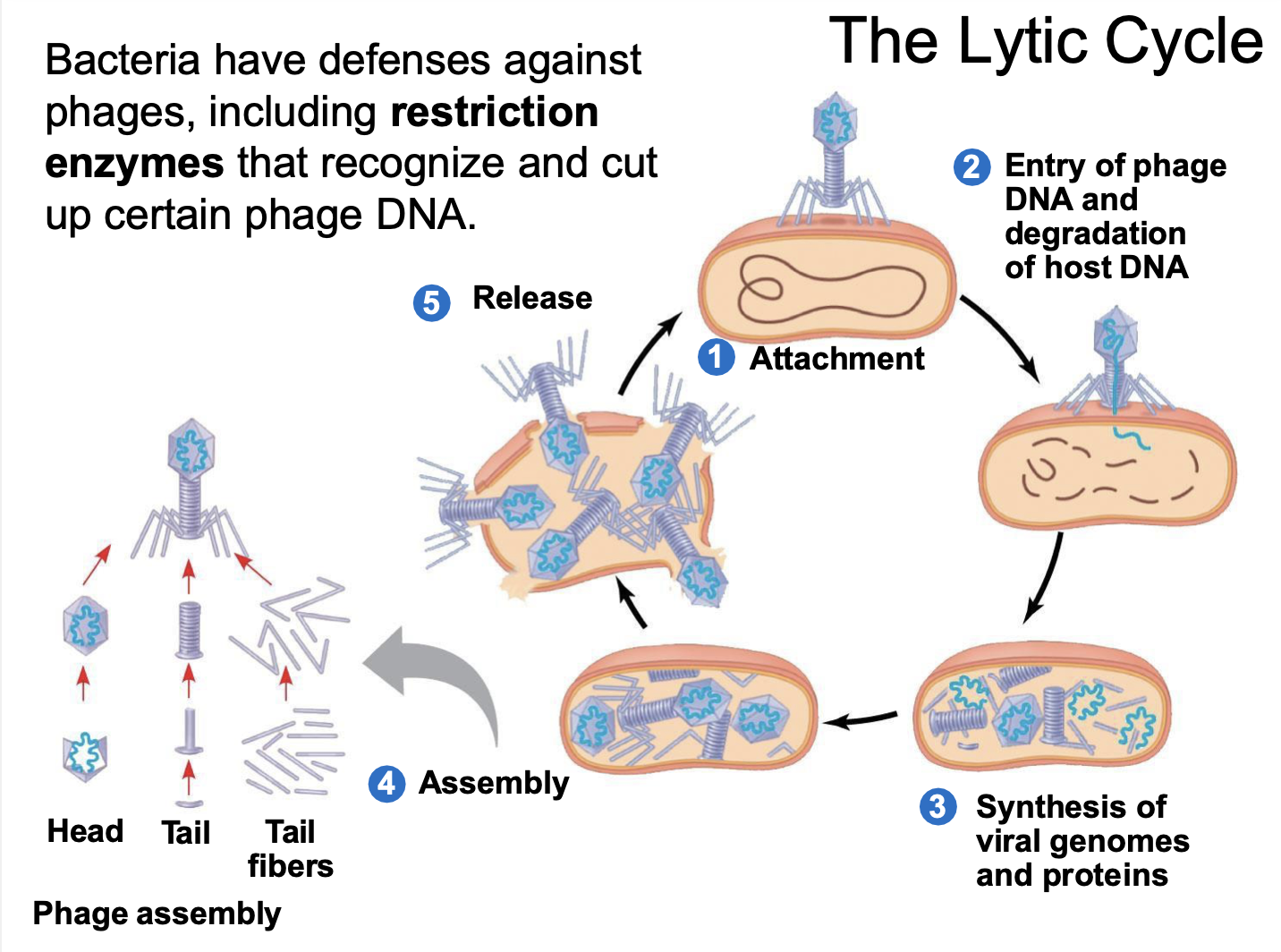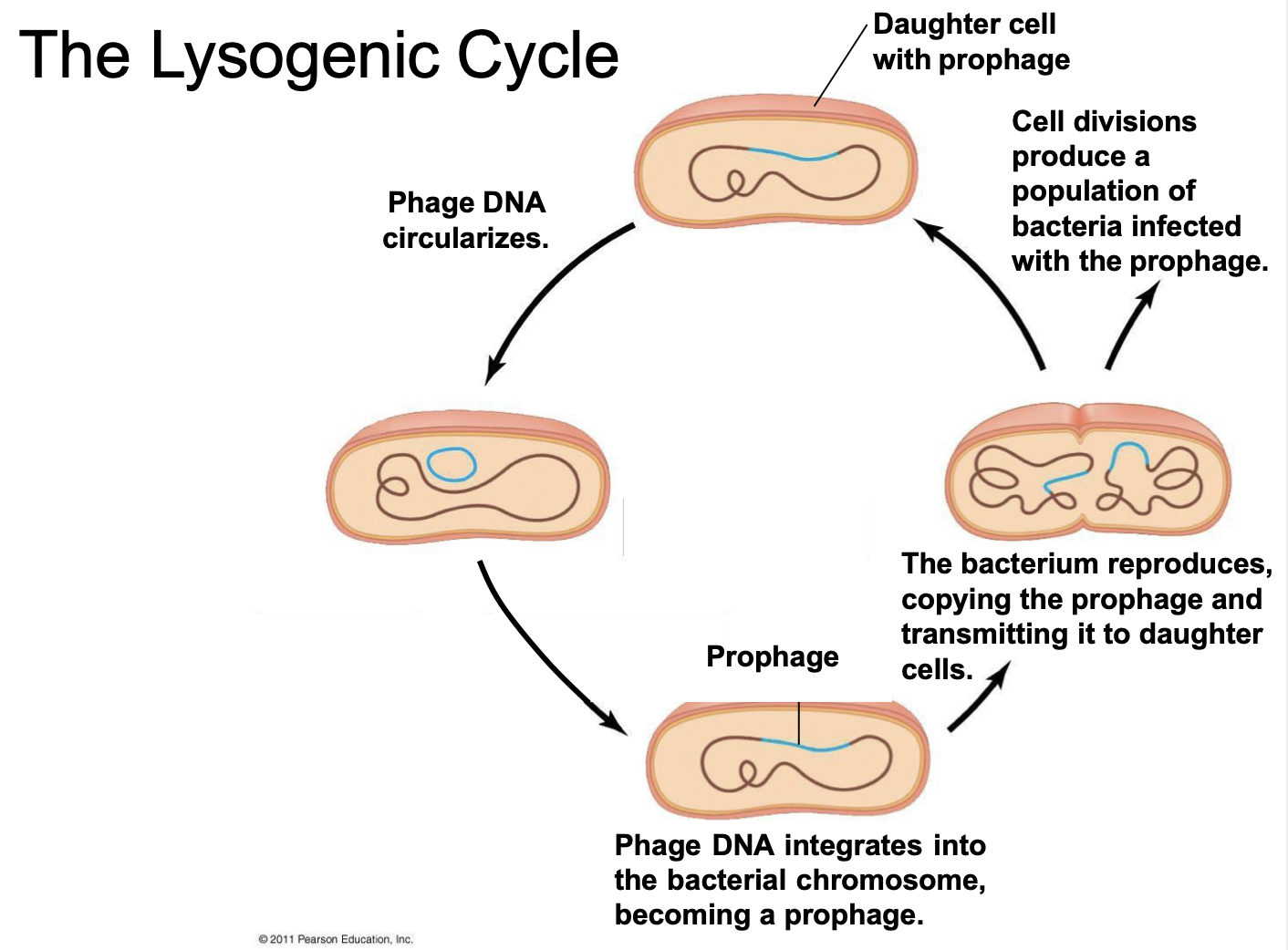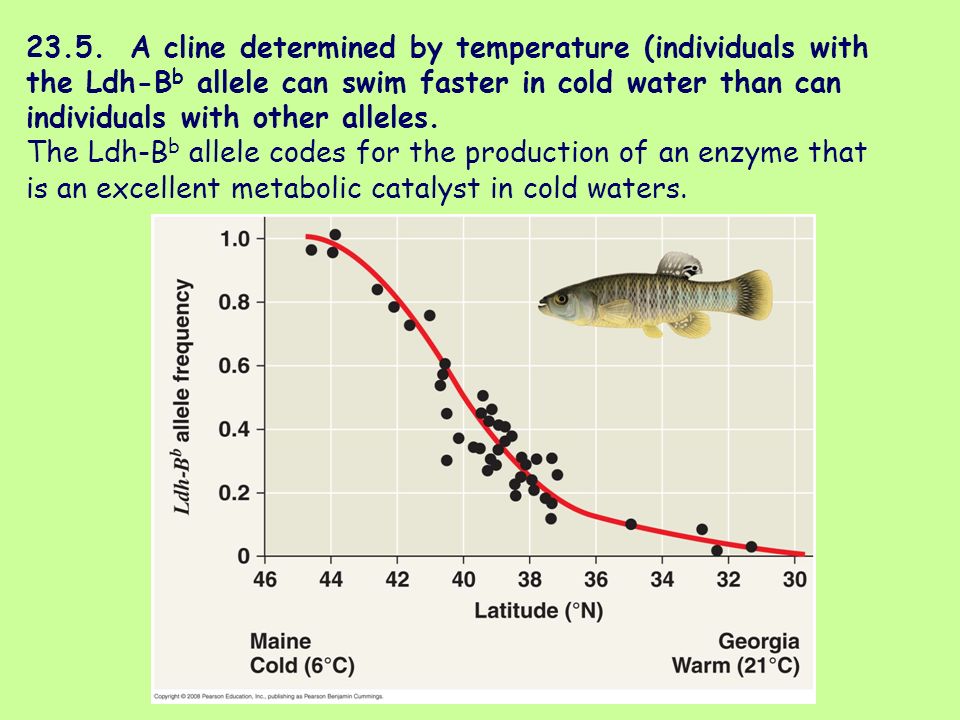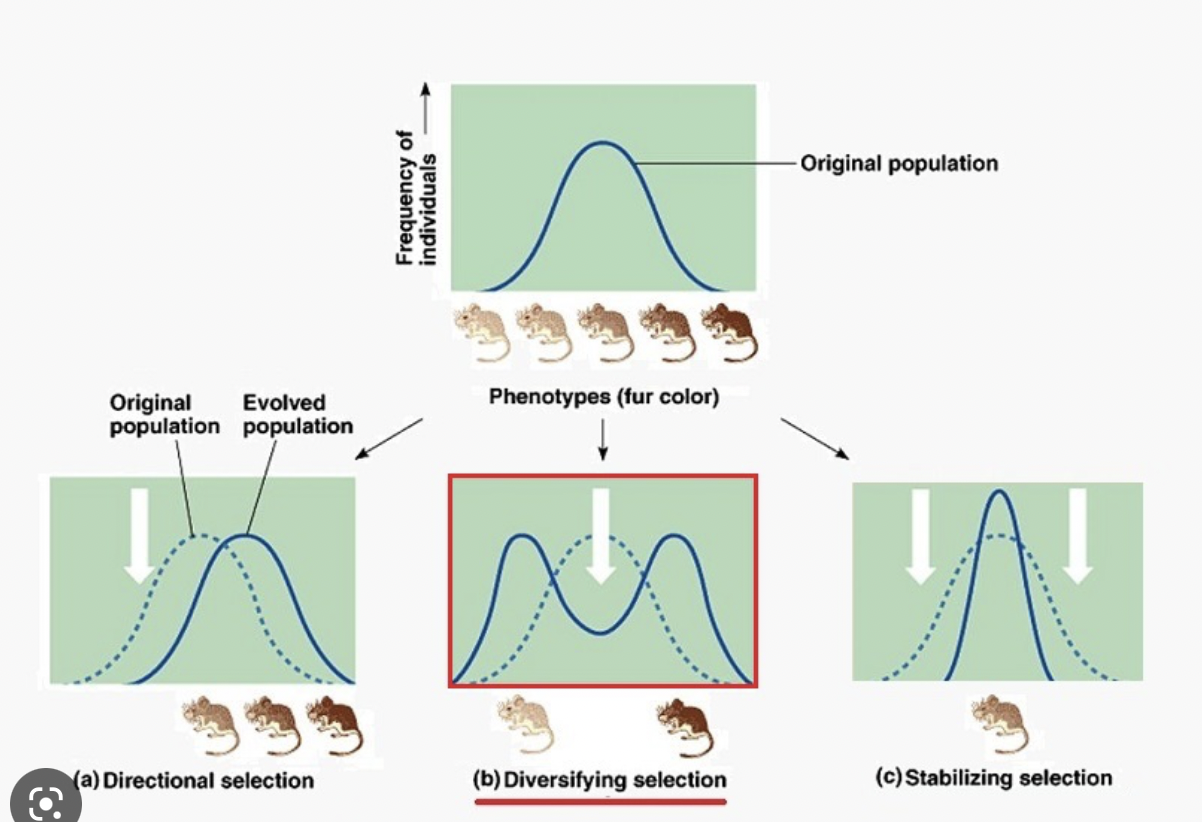bio exam 3 / final
5.0(1)
Card Sorting
1/77
Earn XP
Description and Tags
Study Analytics
Name | Mastery | Learn | Test | Matching | Spaced |
|---|
No study sessions yet.
78 Terms
1
New cards
what is a virus?
a very small infectious particle consisting of only nucleic acids enclosed in a protein coat (sometimes a membranous envelope)
2
New cards
viral genomes consist of either:
double or single stranded rna / dna
3
New cards
what is a capsid?
the protein shell that encloses the genome (nucleic acids) of the virus.
4
New cards
what are capsids built from?
capsomeres
5
New cards
what is a host range
a limited number of host cells that each virus can infect
6
New cards
what happens once a viral genome has entered a host cell?
the cell begins to manufacture viral proteins
7
New cards
what is a bacteriophage
a virus that infects a bacterium by infecting it then reproducing in it
8
New cards

explain the lytic cycle
a phage replicative cycle that ends in the death of the host cell
9
New cards
what is a restriction enzyme
a bacterial defense against phages, they recognize and cut up certain phage DNA
10
New cards
what is the virulent phage
a phage that reproduces only by the lytic cycle
11
New cards

explain the lysogenic cycle
this cycle replicates the phage genome without destroying the host. the viral DNA is known as prophage
12
New cards
what are 3 things that an adaptive immune system do in prokaryotes?
1 - recognize foreign (viral) dna
2 - files copies of it
3 - cuts it when it appears in the cell
2 - files copies of it
3 - cuts it when it appears in the cell
13
New cards
what is a retrovirus?
they use the enzyme reverse transcriptase to copy their RNA genome into dna
(HIV is the retrovirus that causes AIDS)
\
(HIV is the retrovirus that causes AIDS)
\
14
New cards
what is a vaccine / how do they work?
harmless derivatives of pathogenic microbes that stimulate the immune system to mount defenses against the harmful pathogen
15
New cards
explain horizontal transmission vs vertical transmission
the transfer of a virus to another plant is known as horizontal transmission. the inheritance of a virus from a parent plant is called vertical transmission
16
New cards
what is a prion?
a slow- acting, virtually indestructible infectious proteins that cause brain diseases in mammals
17
New cards
what is gene engineering?
the direct manipulation of genes for practical purposes
18
New cards
explain gene cloning:
uses living bacteria to do the work of producing many copies of the gene we want
19
New cards
recombinant dna
dna molecules formed by combining dna segments from two different sources (ie, two different species)
20
New cards
what are plasmids?
small circles of dna that carry extra genes not found in the bacterial chromosome
21
New cards
explain how restriction enzymes work:
they only ever cut where a specific code of dna is present, they are very specific. the area where these codes are present is called a restriction site
22
New cards
what are restriction fragments?
the fragments that result from the cutting of the restriction enzyme
23
New cards
what is a polymerase chain reaction, or pcr?
produces many copies of a specific segment of dna without the use of live cells, just some enzymes of cells. it works in a three-step cycle - heating, cooling, and replication
24
New cards
what is the difference between gene cloning and pcr?
gene cloning uses living cells, pcr does not. pcr uses the same enzymes and processes as gene cloning, it just happens outside of the cell
25
New cards
explain gel electrophoresis
uses gel as a molecular sieve to spread out dna restriction fragments by their size through an electric current
26
New cards
explain how restriction fragment analysis works
dna fragments produced by restriction enzyme digestion of a dna molecule are sorted by gel electrophoresis
27
New cards
what is metagenomics
metagenomics is the sequencing of dna from a whole group of species collected from a single environmental sample. it eliminates the need to culture species separately in the lab
28
New cards
what is a stem cell?
a stem cell is a relatively unspecialized cell that can reproduce itself indefinitely and differentiate into specialized cells
29
New cards
what is proteomics?
the systematic study of all proteins encoded by a genome and how they are regulated and interact in living organisms
30
New cards
how do the genomes of prokaryotic species compare to those of eukaryotic species?
generally, prokaryotic genomes are much smaller than eukaryotic species
31
New cards
what is a transposable element?
a sequence that moves from one site to another in the genome. they are present in both eukaryotes and prokaryotes
32
New cards
explain the differences between transposons and retrotransposons
transposons: move by means of a dna intermediate. they “cut and paste”
retrotransposons: move by means of an rna intermediate. they always move by “copy and paste”, and always result in an increased number of transposable elements in the genome
retrotransposons: move by means of an rna intermediate. they always move by “copy and paste”, and always result in an increased number of transposable elements in the genome
33
New cards
the insertion of transposable elements within a protein-coding sequence may _________ protein production
block
34
New cards
what is a lysozyme?
an enzyme that helps protect animals against bacterial infection
35
New cards
explain the evolution timeline of chimpanzees and humans
humans didn’t evolve from chimps, and neither did they evolve from us! we both evolved from a common ancestor
36
New cards
what are the 4 observations that darwin described of nature
1) individuals in a population vary greatly in their traits (dog breeds / colors)
2) traits are inherited from parent to offspring
3) all species are capable of producing a great abundance of offspring
4) owing to a lack of food or other resources, many of these offspring don’t survive to reproduce
2) traits are inherited from parent to offspring
3) all species are capable of producing a great abundance of offspring
4) owing to a lack of food or other resources, many of these offspring don’t survive to reproduce
37
New cards
what are the two inferences drawn from the 4 observations of nature?
1) it is due to differences in their inherited traits that some individuals will survive longer and produce more offspring than others.
2) this unequal ability of individuals to survive and reproduce (fitness) will lead to the accumulation of favorable traits in the population over generations (natural selection for those traits)
2) this unequal ability of individuals to survive and reproduce (fitness) will lead to the accumulation of favorable traits in the population over generations (natural selection for those traits)
38
New cards
what is a mutation
random changes to the genetic code due to damage to the dna or errors in copying the dna
39
New cards
explain how natural selection works
natural selection can only increase or decrease the prevalence of heritable traits in a population. it doesn’t create new alleles, it simply sorts the ones already present in the population.
40
New cards
what is convergent evolution?
the evolution of superficially similar (analogous) features in distantly related species. this convergence is evidence of adaptation to similar environmental conditions
41
New cards
explain the difference between allopatric and sympatric speciation
* allopatric speciation is when a population forms a new species while geographically isolated from its parent population. mating is interrupted or reduced when a population is divided into geographically isolated subpopulations. (no contact = no mating)
* sympatric speciation is when a subset of a population forms a new species without geographic separation. the speciation takes place in geographically overlapping populations
* sympatric speciation is when a subset of a population forms a new species without geographic separation. the speciation takes place in geographically overlapping populations
42
New cards
explain sexual selection
essentially, it’s natural selection on features directly related to mating. (think the bigger the peacocks feathers are, the more attractive they are for the females, which means those genes are eventually going to be more prevalent)
43
New cards
how does natural selection affect evolution in individuals and populations?
natural selection acts on individuals, but only the population as a whole evolves.
44
New cards
what is microevolution?
microevolution: a change in allele frequencies in a population over generations
45
New cards
what is a cline
a graded change in a trait along a geographic axis

46
New cards
what are the 5 requirements of the hardy-wineberg principle?
1- no mutations are occurring within the population
2- truly random mating is occurring
3- no natural selection
4- there is a very large population (large gene pool)
5- no gene flow (movement of alleles between populations)
2- truly random mating is occurring
3- no natural selection
4- there is a very large population (large gene pool)
5- no gene flow (movement of alleles between populations)
47
New cards
what are the three major factors that alter allele frequencies and bring about the most evolutionary change?
1- genetic drift
2- gene flow
3- natural selection
2- gene flow
3- natural selection
48
New cards
explain genetic drift
describes how allele frequencies fluctuate unpredictably from one generation to the next
49
New cards
what is the bottleneck effect?
a sudden reduction in population size due to a change in the environment
50
New cards
summarize the 4 main effects of genetic drift:
1) genetic drigt is significant in small populations
2) genetic drift causes allele frequencies to change randomly
3) genetic drift can lead to a loss of genetic variation within populations
4) genetic drift can cause harmful alleles to become fixed
2) genetic drift causes allele frequencies to change randomly
3) genetic drift can lead to a loss of genetic variation within populations
4) genetic drift can cause harmful alleles to become fixed
51
New cards
explain gene flow
gene flow consists of the movement of alleles among populations. it tends to reduce variation among populations, as well as it can increase / decrease the fitness of a population.
essentially, makes the 2 populations more similar to each other. can be caused by mating with another population or the influx of a different gene pool
essentially, makes the 2 populations more similar to each other. can be caused by mating with another population or the influx of a different gene pool
52
New cards
what is relative fitness
the contribution an individual makes to the gene pool of the next generation, relative to the contributions of other individuals.
53
New cards
describe the three modes of selection:
1) directional selection favors individuals at one end of the phenotypic range
2) disruptive selection favors individuals at both extremes of the phenotypic range
3) stabilizing selection favors intermediate variants and acts against extreme phenotypes
2) disruptive selection favors individuals at both extremes of the phenotypic range
3) stabilizing selection favors intermediate variants and acts against extreme phenotypes

54
New cards
what is the difference between intrasexual and intersexual selection?
* intrasexual is the competition among individuals of one sec (usually males) for mates of the opposite sex
* intersexual selection occurs when individuals of one sex (usually females) are choosy in selecting their mates
* male “showiness” due to mate choice can increase a male’s chances of attracting a female, while decreasing his chances of survival
* intersexual selection occurs when individuals of one sex (usually females) are choosy in selecting their mates
* male “showiness” due to mate choice can increase a male’s chances of attracting a female, while decreasing his chances of survival
55
New cards
what is balancing selection?
occurs when natural selection maintains stable frequencies of two or more phenotypic forms in a population.
includes heterozygote advantage and frequency-dependent selection.
includes heterozygote advantage and frequency-dependent selection.
56
New cards
what is a secondary sexual trait?
a trait that doesnt have to do with any reproductive organs, but still affects reproduction (a peacock’s tail feathers)
57
New cards
how do eons and eras relate to each other?
eons are broader, when you zoom into an eon, there are multiple eras
58
New cards
how did we find out when oxygen gas became part of earth’s atmosphere?
since rust only forms when there is O2 in the air, we found rust in the crust of the earth which indicated that oxygen had become part of the atmosphere
it’s important to note that oxygen is actually really bad for life, when it entered the atmosphere, it destroyed most of the live organisms at the time.
it’s important to note that oxygen is actually really bad for life, when it entered the atmosphere, it destroyed most of the live organisms at the time.
59
New cards
what process was chosen through natural selection and is now the reason we have oxygen in our atmosphere?
photosynthesis
60
New cards
what was the cambrian explosion?
refers to the sudden appearance of fossils resembling modern animal phyla in the cambrian period
61
New cards
what is adaptive radiation?
the evolution of diversely adapted species from a common ancestor upon introduction to new environmental opportunities
62
New cards
how old is planet earth?
4\.6 billion years old
63
New cards
what is the order of life as it has appeared on earth?
prokaryotes, atmospheric oxygen, single-celled eukaryotes, multicellular eukaryotes, animals
64
New cards
what is taxonomy, and what is a taxon
the active science of describing biodiversity, includes the naming and ordered division into groups of organisms
a taxon is any group used in this classifying
a taxon is any group used in this classifying
65
New cards
what is the order of linnaeus’ system of classification
domain, kingdom, phylum, class, order, family, genus, species
in descending order ^
in descending order ^
66
New cards
what is the difference between a homology and an analogy?
* homology is a similar trait due to a shared ancestry
* analogy is a superficial or misleading similarity
* mimicry is an example of analogy
* analogy is a superficial or misleading similarity
* mimicry is an example of analogy
67
New cards
what is the difference between morphological and developmental homology?
morphological homology refers to a structure found in two (or more) different species, but derived from a common ancestral structure
developmental homology compares their embryonic development.
developmental homology compares their embryonic development.
68
New cards
what is a monophyletic group?
contain species / lineages which are more closely related to each other than to any outside of the group. they share a most recent common anscestor

69
New cards
what is convergent evolution?
occurs when similar environmental pressures and natural selection produce similar (analogous) adaptations in organisms from different evolutionary lineages.
70
New cards
what is an outgroup?
a species or a group of species that is closely related to the in-group, the various species being studied.
71
New cards
when looking at a cladogram, how do you decipher how closely related two species are?
how far back in time you have to go for their common ancestor, not their horizontal proximity
72
New cards
what is the difference between gram-positive and gram-negative bacteria?
gram-positive bacteria have simpler walls with a large amount of peptidoglycan
gram-negative bacteria have less peptidoglycan and an outer membrane that can be toxic
gram-negative bacteria have less peptidoglycan and an outer membrane that can be toxic
73
New cards
many bacteria exhibit ____, the ability to move towards or away from a stimulus
taxis
74
New cards
how do most motile bacteria propel themselves?
by means of flagella
75
New cards
what is horizontal gene transfer?
movement of genes that occur between different species.
76
New cards
explain transformation, transduction, and conjugation, the 3 processes that bring together prokaryotic dna from different individuals
transformation: a prokaryotic cell can take up and incorporate foreign dna from the surrounding environment
transduction: the movement of genes between bacteria by bacteriophages
conjugation: genes are transferred from one prokaryotic cell to another. a donor cell attaches to a recipient by a plius, pulls it closer, and transfers dna
transduction: the movement of genes between bacteria by bacteriophages
conjugation: genes are transferred from one prokaryotic cell to another. a donor cell attaches to a recipient by a plius, pulls it closer, and transfers dna
77
New cards
what is the F factor
a piece of DNA that is required for the production of pili
78
New cards
what is the F plasmid (F+)
cells containing the plasmid function as DNA donors during conjugation. the f factor is transferable during conjugation.